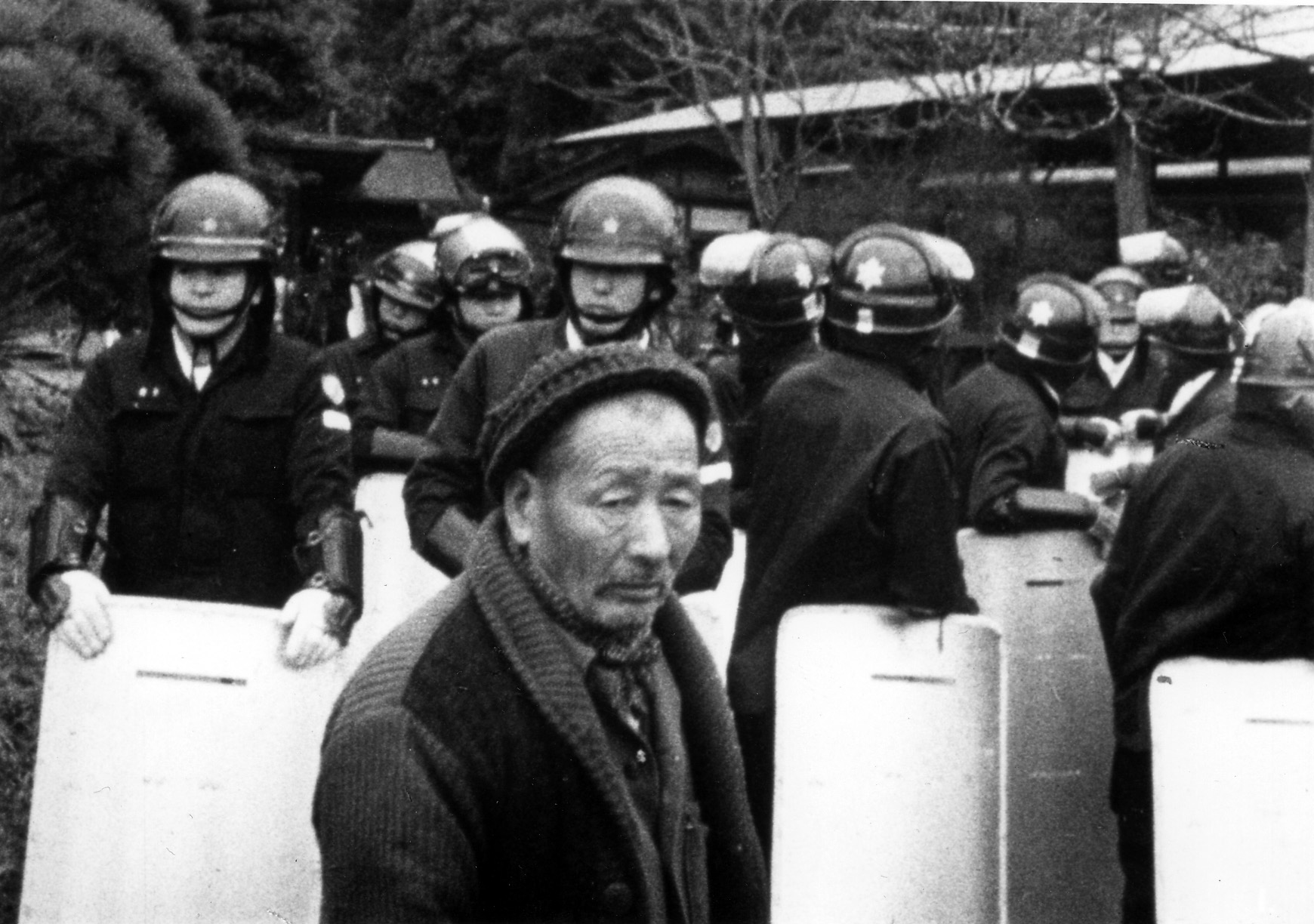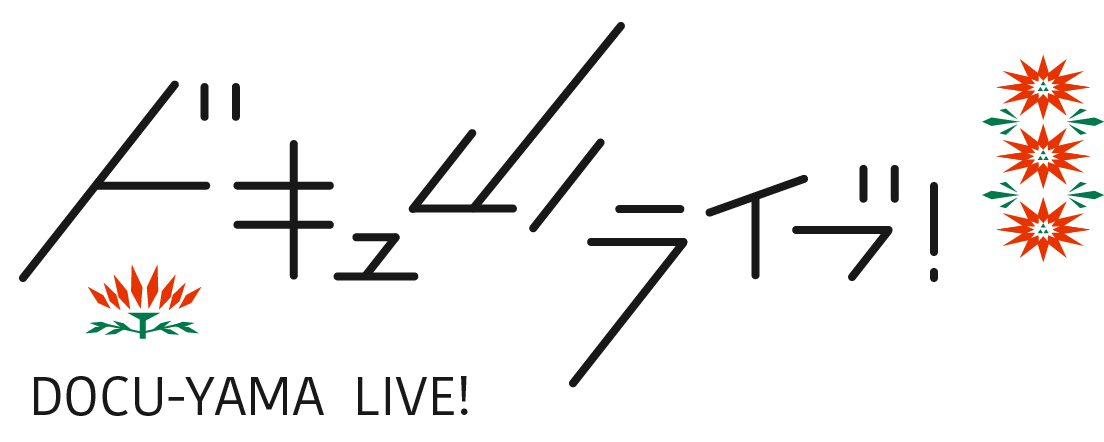
Throughout Narita: Heta Village (Sanrizuka Heta buraku, 1973; screened at YIDFF 2025 in the Special Invitation Films section), viewers accustomed to the hectic rhythms of modernity may feel that the time of the village is slower and more complex. We are often lost in thought while watching the film. It feels as if we could join the villagers the next morning. This is made possible by Ogawa Pro’s storytelling skills, long takes, the use of zooms in and out and close-ups, and the interaction between sound and images.
One of the more dramatic scenes in Heta Village shows two young men, Haruo and Masahiko, members of the local resistance to the construction of Narita Airport, returning from their month-long imprisonment, released on bail. The other villagers shower them with laughter and applause.
When Masahiko returns from prison, his hair is longer than when we saw him get arrested in the middle of the film. It’s an obvious sign of the straightforward and melancholic passage of time. Masahiko and Haruo have also grown fatter, because, as they explain, they’ve been unable to use their energy.
Tamura Masaki’s camera scans the crowd, from the cheering villagers to the father of one of the boys, standing by the car thanking the friends who helped drive them back. Some cinematographers, for aesthetic reasons, would probably choose to zoom in on the villagers’ faces which, in the dark, are illuminated by the burning fire. But Tamura’s camera movement shows maturity and restraint as he senses the dramatic nature of the scene. Tamura is always observing and feeling the scene without rigidly just sticking to one particular frame for aesthetic reasons. As a reward, he is able to capture the liveliness of the scene perfectly.
The speeches by one of the leaders of the village parents’ alliance and by the fathers of the two boys make a transition from the obvious to the obscure. What is obvious is the expected general cheerfulness over the boys’ return. What is obscure is the way prison time has impacted these young boys. In response to the villagers’ warm welcome, they show nothing but politeness and cheerfulness. But what’s behind this politeness?
Haruo talks nonstop. He gives a logical and passionate explanation about why he didn’t give up in prison. “We will never give in. Why? Because this is our home. Even if we’re given long sentences, we will return to our home. There’s no other place to go. Our minds are made up.” Masahiko, on the other hand, is relatively silent. The sound of Haruo’s voice continues in the background while Tamura moves his camera to frame a close-up of Masahiko. This scene is truly telling as it shows that what was hidden under the previous politeness was this mix of silence, relief, and vulnerability. Masahiko has turned from a confident man walking out of his house fearless in the middle of the film, to a weak and tired character who wants to engage with his friends but can’t match their energy and finds nothing to say about himself.
As Haruo says, “I was lonely and felt stressed but you all visited me so I was fine. The boys from Iwayama seemed fine but they were really suffering… I dreamt my ties to the village were cut and I couldn’t return. I was separated from the village.” These lines show that the way farmers and villagers view the land is completely different from how the modern state views land. The state views everything as a commodity that is available for selling and buying at the right price. But villagers view land as their one and only home that is sacred and contains a rich history of traditions, memory, and culture, something the state would not understand.
Haruo reveals how fragile he truly was in prison and how much the villagers’ visits and food meant to him. At the same time, this kind of love and connection represents a kind of curse that he can’t free himself from, though he dreamt of doing so in the prison. Here as in other scenes in the film, Ogawa avoids glorification of suffering and a populist manipulation of emotions. Well aware of what he’s filming and showing a truly vulnerable person, Ogawa avoids the gaze of exotic curiosity that is sometimes found in documentary films about marginalized groups.
Ogawa realizes that dramatizing or showing emotion-boiling scenes would only blur the fact of the village’s real existence. This is why out of all the scenes, the scene of the boys’ return, which one might expect to be treated as a rousing climax, is shown in a way that calms the audience instead. The filmmakers let the scene play out by itself while they remain a quiet observer, just like the audience. They maintain a deliberate distance, stating things objectively, without sentiment. The scene is filmed in a plain and even way that makes both sides of the event, both the evident and the hidden side, available to the viewers.
In the end, the long take of Masahiko’s sorrowful face and silence leaves us with a strong and emotional question—what is behind that sorrowful face of his? Only Masahiko can answer that.
Chen-pang Chang
![ドキュ山ライブ! [DOCU-YAMA LIVE!]](http://www.yidff-live.info/wp-content/themes/yidff-live_2017/images/header_sp_logo1.png)

